Neumann M 149 Tube Handleiding
Bekijk gratis de handleiding van Neumann M 149 Tube (19 pagina’s), behorend tot de categorie Microfoon. Deze gids werd als nuttig beoordeeld door 42 mensen en kreeg gemiddeld 4.5 sterren uit 21.5 reviews. Heb je een vraag over Neumann M 149 Tube of wil je andere gebruikers van dit product iets vragen? Stel een vraag
Pagina 1/19

· . · ·
() / - · - · @. · ..
M T
O M 2
B 6
M ’ 10
I O 14
M 18
G 22
I ’ 26

2
1. Introduction
This manual contains essential information for the
operation and care of the product you have pur-
chased. Please read the instructions carefully and
completely before using the equipment. Please
keep this manual where it will be accessible at all
times to all current and future users.
Additional information, in particular concerning
available accessories and Neumann service
partners, can always be found on our website:
www.neumann.com. Information about service
partners can also be obtained by telephone:
+49 (0) 30 / 41 77 24 - 0.
The following related files are available in PDF
format in the Downloads section of our website
www.neumann.com:
Operation with Unbalanced or Center Tap
Grounded Inputs
Some Remarks on Microphone Maintenance
The Neumann online forum on our website
enables Neumann users worldwide to share their
experiences. Through its integrated archive func-
tion, the forum has developed into an extensive
knowledge pool.
2. Safety instructions
The microphone and the accompanying power
supply equipment have the intended purpose
of converting acoustic signals into electrical
signals.
Connect the microphone only to power supply
equipment that has been approved by Neumann
for this purpose. Connect the output of the
power supply equipment only to devices which
have an input that is suitable for microphones.
Repairs and servicing are to be carried out only
by experienced, authorized service personnel.
Unauthorized opening or modification of the
equipment shall void the warranty.
High operating voltages are required for the
tube in the microphone. Contact with the volt-
ages present in the interior of the device can
result in injury or death; therefore, the micro-
phone and power supply must be opened only
by authorized, qualified personnel.
•
•
The microphone must be operated only with
the supplied microphone cable or with a cable
of the same type. Since hazardous voltages are
generated by the power supply that can result
in injury or death, always ensure that the mi-
crophone cable used is undamaged. Damaged
cables must no longer be used, and must be dis-
abled in order to prevent injury to persons as a
result of accidental use.
Use the equipment only under the conditions
specified in the “Technical data” section. Allow
the equipment to adjust to the ambient tempera-
ture before switching it on.
Do not operate the equipment if it has been dam-
aged during transport.
Always run cables in such a way that there is no
risk of tripping over them.
Unless required for operation, ensure that liquids
and electrically conductive objects are kept at a
safe distance from the equipment and its connec-
tions.
Do not use solvents or aggressive cleansers for
cleaning purposes.
Dispose of the equipment in accordance with the
regulations applicable to the respective country.
3. Brief description
The M 149 Tube is a condenser studio microphone
with transformerless circuit technology.
The microphone has the selectable directional
characteristics omnidirectional, cardioid, wide-
angle cardioid, hypercardioid and figure-8, as well
as four additional intermediate characteristics.
Key features include extremely low self-noise, an
extensive dynamic range and the full, rich, warm
sound of the tube.
Typical applications of this universally applicable
microphone include dubbing, broadcasting, and
vocal and instrumental recording.
With its fine sound character gradations, the
microphone is particularly suitable for vocals and
broadcasting.
EN

4
When the directional characteristic is changed,
an increased noise level may occur for a period
of approximately 30 seconds. This does not indi-
cate a malfunction, but arises due to the electri-
cal recharging of the microphone capsule to the
appropriate bias.
Setting the high-pass filter
On the back of the microphone is a slide switch for
a high-pass filter, with seven settings. The cuto
frequency (−3 dB) can be selected in half-octave
steps, from 20 Hz to 160 Hz. The high-pass filter
can be used to suppress low-frequency interfer-
ence (e.g. caused by impact sound or wind noise)
or to compensate for the proximity eect.
Suppressing noise interference
The frequency response of the M 149 Tube ex-
tends below 20 Hz. The microphone is of course
correspondingly sensitive to low-frequency inter-
ference such as structure-borne noise and wind
or pop noise. Depending upon the situation, the
use of a windscreen and/or popscreen is therefore
recommended.
Sound test
Simply speak into the microphone. Do not blow
into the microphone or subject it to pop noise,
since this can easily result in hazardous sound
pressure levels.
6. Shutdown and storage
Before switching o the microphone or discon-
necting the cables, reduce the volume of con-
nected equipment.
Only then should the power supply equipment be
switched o.
Disconnect the cables.
When disconnecting a cable, always pull only on
the connector and not on the cable itself.
Microphones which are not in use should not be
allowed to remain on the stand gathering dust.
A microphone which is unused for a prolonged
period should be stored under normal atmo-
spheric conditions, and should be protected from
dust. For this purpose, use a lint-free, air-perme-
able dust cover or the original packaging of the
microphone.
EN
7. Troubleshooting
Problem
▶
Possible causes
▶
Solution
Microphone
not operating
The power supply unit is not switched on. Check the connection to the power supply
line.
The microphone is not connected to the
power supply unit or is not ready for
operation.
Check the LED status on the power supply
unit.
No signal
transmission
The microphone is not connected to the
correct microphone amplifier input of th
esubsequent equipment.
Check the signal path.
Check the corresponding channel settings.
8. Technical data and
connector assignments
Permissible atmospheric conditions:1)
Operating temperature range ........... 0 °C ... +70 °C
Storage temperature range ........... −20 °C ... +70 °C
Humidity range ..................... 0 % … 90 % at +20 °C
0 % … 85 % at +60 °C
Acoustical op. principle .............Pressure gradient
transducer
Directional pattern ........................................ Omni/
wide-angle cardioid/cardioid/
hyper-cardioid/figure-8 and 4 additional
intermediate patterns
Frequency range ...............................20 Hz...20 kHz
Sensitivity2) ................................. 34/47/62 mV/Pa
3)
Rated impedance ........................................50 ohms
Rated load impedance ..........................1000 ohms
Signal-to-noise ratio4), CCIR5) ......... 66/69/71 dB3)
Signal-to-noise ratio4),
A-weighted5) ...................................... 78/81/83 dB
3
Equivalent noise level,
CCIR5) .................................................28/25/23 dB
3)
Equivalent noise level,
A-weighted5) ...................................16/13/11 dB-A
3)
Max. SPL (tube characteristic)6)
for THD < 0.5 % ............................................. 120 dB
for THD < 5 % ................................................. 136 dB
Product specificaties
| Merk: | Neumann |
| Categorie: | Microfoon |
| Model: | M 149 Tube |
| Kleur van het product: | Nikkel |
| Soort: | Microfoon voor podiumpresentaties |
| Connectiviteitstechnologie: | Bedraad |
| Signaal/ruis-verhouding: | 78 dB |
| Microphone direction type: | Omnidirectioneel |
| Aansluiting(en): | XLR3F |
| Frequentie microfoon: | 20 - 20000 Hz |
| Microphone input impedance: | 50 Ohm |
| XLR out: | Ja |
| Gewicht microfoon: | 730 g |
| Dynamisch bereik: | 121 dB |
| Afmetingen microfoon (DxH): | 70 x 201 mm |
Heb je hulp nodig?
Als je hulp nodig hebt met Neumann M 149 Tube stel dan hieronder een vraag en andere gebruikers zullen je antwoorden
Handleiding Microfoon Neumann

28 Februari 2025
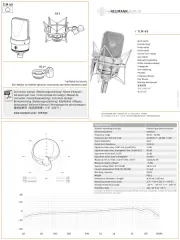
28 Februari 2025

27 Februari 2025

2 December 2024
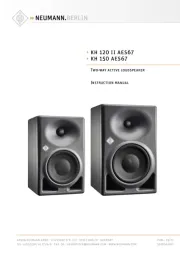
2 December 2024
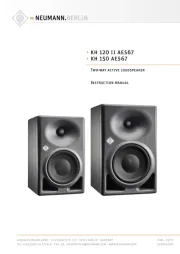
2 December 2024
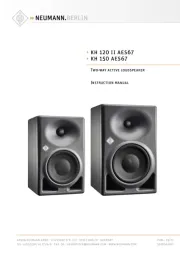
2 December 2024

16 November 2024

16 November 2024

16 November 2024
Handleiding Microfoon
- Blue
- Line 6
- Golden Age Project
- Celly
- Harley Benton
- Scope Labs
- Philips
- Rythflo
- MayBesta
- CAD Audio
- Comica
- Perfect Choice
- AMT
- NPTCL
- Synco
Nieuwste handleidingen voor Microfoon
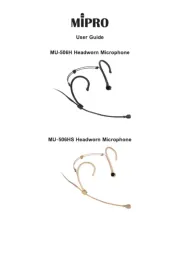
29 Juli 2025
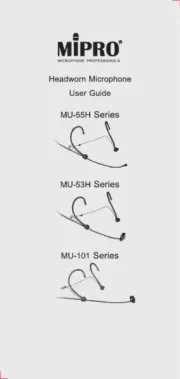
29 Juli 2025
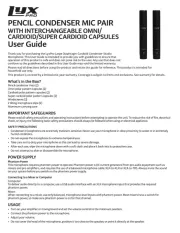
29 Juli 2025

29 Juli 2025
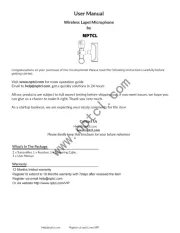
28 Juli 2025
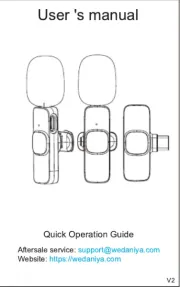
28 Juli 2025
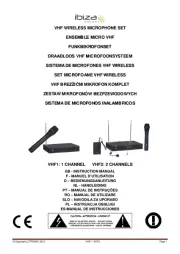
28 Juli 2025
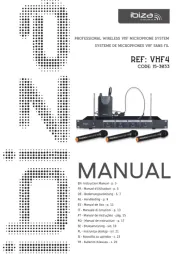
28 Juli 2025
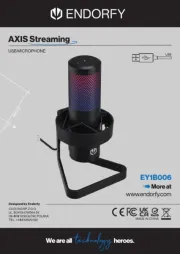
23 Juli 2025
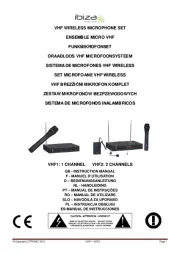
22 Juli 2025